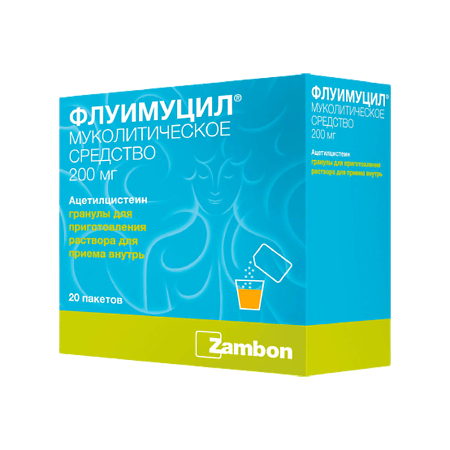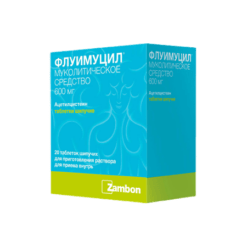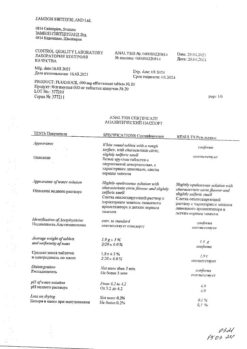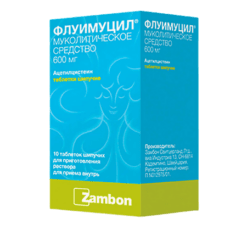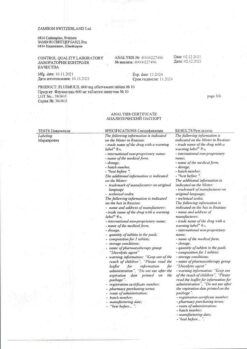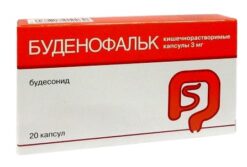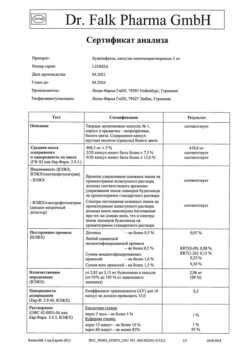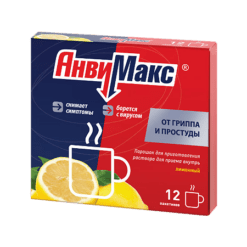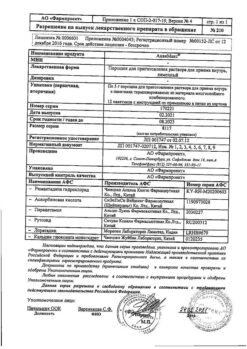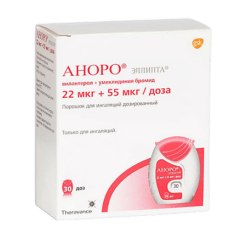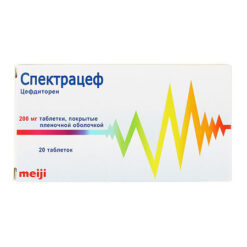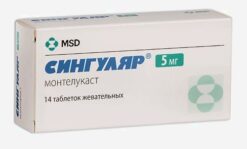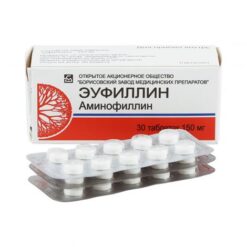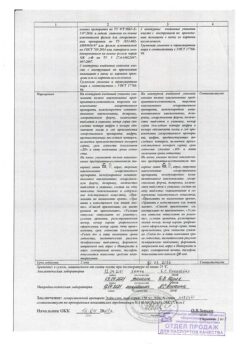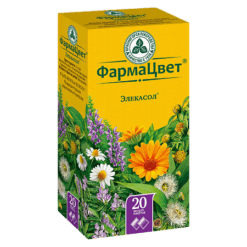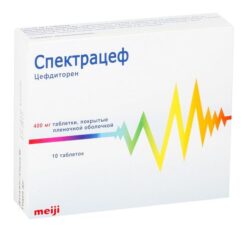No products in the cart.
Fluimucil, 200 mg sachet 20 pcs
€3.63 €3.23
Description
Fluimucil is a mucolytic drug with antioxidant properties. It dilutes sputum, increases its volume and facilitates its separation.
The action of acetylcysteine is associated with the ability of its sulfhydryl groups to break intra- and intermolecular disulfide bonds of acidic mucopolysaccharides of sputum, which leads to depolarization of mucoproteins and reduction of sputum viscosity.
Contains activity in the presence of purulent sputum.
It has an antioxidant effect due to the presence of a SH-group capable of neutralizing electrophilic oxidative toxins.
It also has anti-inflammatory action (due to the suppression of free radicals and active oxygen-containing substances responsible for the development of inflammation in lung tissue).
Indications
Indications
Acute and chronic diseases of the respiratory system associated with the formation of viscous, difficult-to-discharge bronchial secretions: bronchitis, tracheitis, bronchiolitis, pneumonia, bronchiectasis, cystic fibrosis, lung abscess, pulmonary emphysema, laryngotracheitis, interstitial lung diseases, lung atelectasis (due to blockage of the bronchi by mucus plug).
Catarrhal and purulent otitis, sinusitis, sinusitis (facilitation of secretion).
Removal of viscous secretions from the respiratory tract in post-traumatic and postoperative conditions.
Pharmacological effect
Pharmacological effect
Pharmacotherapeutic group
Mucolytic agent.
ATX code: R05CB01.
PHARMACOLOGICAL PROPERTIES
Pharmacodynamics
A mucolytic agent that thins sputum, increases its volume, and facilitates the separation of sputum. The action is associated with the ability of free sulfhydryl groups of acetylcysteine to break intra- and intermolecular disulfide bonds of acidic mucopolysaccharides of sputum, which leads to depolymerization of mucoproteins and a decrease in sputum viscosity. In addition, it reduces induced hyperplasia of mucoid cells, enhances the production of surfactants by stimulating type II pneumocytes, stimulates mucociliary activity, which leads to improvement mucociliary clearance.
Remains active against purulent sputum, mucopurulent and mucous sputum.
Increases the secretion of less viscous sialomucins by goblet cells, reduces the adhesion of bacteria to the epithelial cells of the bronchial mucosa.
Stimulates mucous cells of the bronchi, the secretion of which is lysed by fibrin. It has a similar effect on the secretions formed during inflammatory diseases of the ENT organs. It has an antioxidant effect due to the presence of an SH group that can neutralize electrophilic oxidative toxins. Acetylcysteine easily penetrates into the cell and is deacetylated to L-cysteine, from which intracellular glutathione is synthesized. Glutathione is a highly reactive tripeptide, a powerful antioxidant, cytoprotector that traps endogenous and exogenous free radicals and toxins. Acetylcysteine prevents exhaustion and helps increase the synthesis of intracellular glutathione, which is involved in the redox processes of cells, thus promoting the detoxification of harmful substances. This explains the effect of acetylcysteine as an antidote for paracetamol poisoning.
Paracetamol exerts its cytotoxic effect through the progressive depletion of glutathione. The main role of acetylcysteine is to maintain proper levels of glutathione concentration, thereby providing protection for cells.
Protects alpha1-antitrypsin (elastase inhibitor) from
inactivating effects of HOCl, an oxidizing agent produced by myeloperoxidase of active phagocytes. It also has an anti-inflammatory effect (by suppressing the formation of free radicals and reactive oxygen-containing substances responsible for the development of inflammation in the lung tissue).
Pharmacokinetics.
Fluimucil is well absorbed when taken orally. It is immediately deacetylated to cysteine in the liver. In the blood, a mobile equilibrium of free acetylcysteine and its metabolites (cysteine, cystine, diacetylcysteine) is observed, free and bound to plasma proteins. Due to the high “first pass” effect through the liver, the bioavailability of acetylcysteine is about 10%. Acetylcysteine penetrates into the intercellular space and is predominantly distributed in the liver, kidneys, lungs, and bronchial secretions.
The maximum concentration in plasma is reached 1-3 hours after oral administration and is 15 mmol/l, binding to plasma proteins is 50%. T1/2 is about 1 hour, with liver cirrhosis it increases to 8 hours. It is excreted by the kidneys in the form of inactive metabolites (inorganic sulfates, diacetylcysteine), a small part is excreted unchanged through the intestines. Penetrates the placental barrier.
Special instructions
Special instructions
For patients with bronchial asthma and obstructive bronchitis, acetylcysteine should be prescribed with caution under systematic monitoring of bronchial patency.
The drug contains aspartame, its use in patients with phenylketonuria is contraindicated.
The drug contains sorbitol; this drug is contraindicated for patients with rare hereditary problems associated with fructose intolerance.
The presence of a slight sulfuric odor is the characteristic odor of the active substance.
When dissolving acetylcysteine, you must use glass containers and avoid contact with metal and rubber surfaces.
Acetylcysteine may have a slight effect on histamine metabolism, so caution must be exercised when using the drug for long-term treatment of patients suffering from histamine intolerance when symptoms of intolerance occur (headache, vasomotor rhinitis, itching).
Active ingredient
Active ingredient
Acetylcysteine
Composition
Composition
One sachet contains:
Active substance:
acetylcysteine - 200 mg;
Excipients:
aspartame 25 mg, betacarotene 12.3 mg,
orange flavor 100 mg,
sorbitol 662.7 mg.
Pregnancy
Pregnancy
The drug is prescribed during pregnancy only if the expected benefit to the mother outweighs the potential risk to the fetus.
If it is necessary to prescribe the drug during lactation, breastfeeding should be stopped.
Contraindications
Contraindications
Hypersensitivity to acetylcysteine, peptic ulcer of the stomach and duodenum in the acute stage, phenylketonuria, fructose intolerance, children under 2 years of age, lactation period.
With caution – Peptic ulcer of the stomach and duodenum, varicose veins of the esophagus, hemoptysis, pulmonary hemorrhage, bronchial asthma, diseases of the adrenal glands, liver and/or kidney failure, arterial hypertension.
Side Effects
Side Effects
The table below lists adverse reactions by organ system class and frequency of occurrence (very common (>1/10), common (>1/100 to 1/1000 to 1/10000 to <1/1000), very rare (<1/10000) and unknown (not estimable based on available data).
For each frequency group, adverse events are presented in order of decreasing severity.
Immune system disorders
Uncommon (> 1/1000 – <1/100)
Hypersensitivity
Very rare (< 1/10000)
Anaphylactic shock, anaphylactic/anaphylactoid reaction
Nervous system disorders
Uncommon (> 1/1000 – <1/100)
Headache
Hearing and inner ear disorders
Uncommon (> 1/1000 – <1/100)
Tinnitus
Cardiac disorders
Uncommon (> 1/1000 – <1/100)
Tachycardia
Vascular system disorders
Very rare (< 1/10000)
Bleeding
Respiratory, thoracic and mediastinal disorders
Rarely (< 1/ 10000 - < 1/ 1000)
Bronchospasm dyspnea
Gastrointestinal disorders
Uncommon (> 1/1000 – <1/100)
Vomiting, diarrhea, stomatitis, abdominal pain, nausea
Rarely (< 1/ 10000 - < 1/ 1000)
Dyspepsia
Disorders affecting the skin and subcutaneous tissues
Uncommon (> 1/1000 – < 1/100)
Urticaria, rash, angioedema, itching
General disorders and conditions at the site of application
Uncommon (> 1/1000 – < 1/100)
Pyrexia
Not known
Facial swelling
Analyzes and research
Uncommon (> 1/1000 – < 1/100)
Low blood pressure
In very rare cases, serious skin reactions such as Stevens-Johnson syndrome and Lyell’s syndrome have been reported in a chronological relationship with the use of acetylcysteine.
In most cases, at least one concomitantly taken drug could be involved in triggering the above mucocutaneous syndromes.
For this reason, you should immediately consult a doctor if any new changes to the skin or mucous membrane occur, and immediately stop taking acetylcysteine.
A decrease in platelet aggregation in the presence of acetylcysteine has been confirmed by various studies. Clinical significance has not yet been established.
Interaction
Interaction
The combined use of acetylcysteine with antitussives may increase sputum stagnation due to suppression of the cough reflex.
When used simultaneously with antibiotics such as tetracyclines (excluding doxycycline), ampicillin, amphotericin B, they may interact with the thiol group of acetylcysteine, which leads to a decrease in the activity of both drugs. Therefore, the interval between doses of these drugs should be at least 2 hours.
The simultaneous use of acetylcysteine and nitroglycerin can cause a marked decrease in blood pressure and headache.
Concomitant use of acetylcysteine and carbamazepine may result in subtherapeutic levels of carbamazepine.
Activated carbon can reduce the effect of acetylcysteine. Acetylcysteine eliminates the toxic effects of paracetamol.
Acetylcysteine may interfere with the colorimetric determination of salicylates.
Acetylcysteine may interfere with the analysis of ketones in urine.
Overdose
Overdose
Acetylcysteine when taken at a dose of 500 mg/kg/day does not cause signs and symptoms of overdose.
Symptoms
Symptoms that may occur include nausea, vomiting and diarrhea.
Treatment: There is no specific antidote, treatment is symptomatic.
Storage conditions
Storage conditions
At a temperature not exceeding 25 °C. Keep out of the reach of children.
Shelf life
Shelf life
3 years. Do not use after the expiration date stated on the package.
Manufacturer
Manufacturer
Zambon S.p.A., Italy
Additional information
| Shelf life | 3 years. |
|---|---|
| Conditions of storage | In a light-protected place at a temperature not exceeding 25 °C. |
| Manufacturer | Zambon S.p.A., Italy |
| Medication form | granules for preparation of oral solution |
| Brand | Zambon S.p.A. |
Other forms…
Related products
Buy Fluimucil, 200 mg sachet 20 pcs with delivery to USA, UK, Europe and over 120 other countries.

